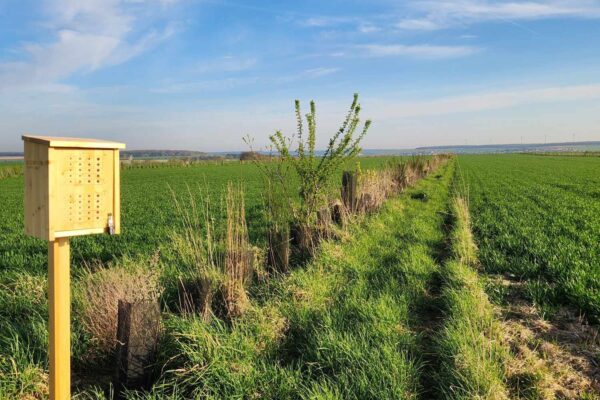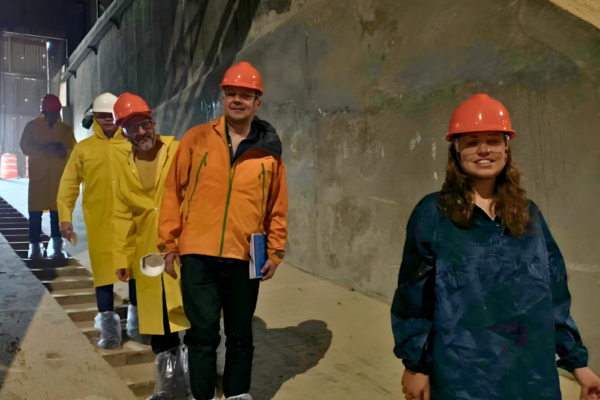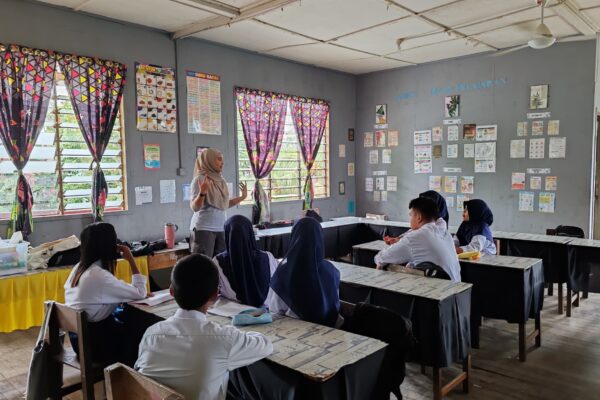5 min read
A remarkable transformation has been taking place in the verdant heart of the Dominican Republic, where the humid, tropical climate creates ideal conditions for cocoa farming. This is the story of the Cacao Forest project, a collaborative endeavour to revitalise Dominican cocoa farming and breathe new life into the communities that depend on it.
Cocoa holds a significant place in the Dominican Republic's agricultural and cultural landscape. The country is the 10th most important cocoa producer in the world and the largest exporter of organic cocoa. It is part of a select group of only 14 countries producing fine and aromatic cocoa used in the production of gourmet chocolate.
With an estimated 350,000 people benefiting from it, the Dominican cocoa sector is a critical source of income for many rural families. It involves more than just bean cultivation. It encompasses a whole ecosystem of related activities, including fermentation and drying processes that are essential to developing cocoa’s unique flavour.

Dominican farmers have traditionally practised a form of agroforestry in which cocoa trees are grown under the canopy of larger trees, mimicking the natural forest environment. This method is not only beneficial for the cocoa trees but also helps preserve biodiversity and maintain soil health.
Yet despite its national significance, and notwithstanding local farmers’ traditional knowledge, the Dominican cocoa sector is experiencing a number of threats and challenges. Plantations are ageing, and productivity is declining. Producers are getting older, too, the majority being over 60. And with a household income often below the national poverty line and subject to market fluctuations, cocoa farming is no longer drawing interest from the younger generations…
A shared vision amongst French chocolatiers sparked the beginnings of the Cacao Forest project. Back in 2015, a group of French chocolate makers – Valrhona, Ecotone, Weiss, Révillon, Voisin, Relais Desserts, and Carambar & Co – decided to join forces to help find solutions to the challenges faced by the Dominican cocoa sector.
Together, they approached Earthworm and CIRAD (French Agricultural Research Centre for International Development). With the support of the French Development Agency and the Terra Isara endowment fund, Cacao Forest was born! It is a unique alliance of artisans, higher education institutions, government bodies, local cooperatives, and farmers led on the ground by our team in Santo Domingo in partnership with CIRAD.

Our mission was clear: to create a sustainable and economically viable cocoa farming model. To increase the income of farming households while preserving the quality of Dominican cocoa and maintaining a high level of agricultural biodiversity.
This marked the birth of the Cacao Forest project, a venture aimed at transforming the Dominican cocoa landscape through innovative agroforestry practices.
The project's first phase involved extensive research and collaboration with local farmers and stakeholders.In 2016, our team began by conducting environmental assessments, conducting market research, and building partnerships with three cooperatives (Grupo CONACADO, COOPROAGRO, and FUNDOPO), public institutions (Ministries of Agriculture and Environment, National Cocoa Commission, IDIAF Research Centre, and UASD University), and private/non-governmental partners (ISA, UNEV, and PUCMM Universities, and FUPAROCA Foundation).
We held 34 collaborative workshops across three provinces, discussing farming practices with 66 cocoa farmers, all of whom already use agroforestry.
These workshops served as a platform for farmers to share their experiences and challenges. Despite many of them having received organic cocoa certifications, many still relied on agrochemicals for their other crops. They also needed support to optimise the full potential of their agroforestry systems.
Perhaps the most critical aspect of this initial phase was building trust and fostering a sense of community. Farmers, some of whom had been cultivating cocoa for decades, were understandably cautious about the idea of adopting new practices. Our collaborative approach helped build strong relationships and a sense of community ownership over the project.

What is Agroforestry?
With a strong foundation of trust and collaboration in place, we moved to the next phase: developing and testing agroforestry models.
The participatory work with farmers led to the development of four agroforestry cocoa farming models to determine the most practical combination of trees and crops. Each model associates different varieties of cocoa with a mix of cultivated plants such as avocados, bananas, timber trees, and spices like turmeric and ginger, selected for their potential to generate additional income for farming households.
Since 2018, with CIRAD's agronomists, we established 54 experimental plots across 35 farms in Duarte and San Cristóbal, covering a practical area of 13.5 hectares. These plots incorporated 7,702 cocoa trees from 19 different varieties, along with 33,259 associated plants from 22 species and were monitored daily over a three-year period.
The results were extremely promising, with all four models significantly more profitable than the control one. After four years, the highest-performing model (# 3) provided an income of $3,000/year/ha, three times more than the control model! According to our projections, model 3 could achieve up to $10,000/year/ha after 10 years.





These models were financially more profitable and helped reduce farmers’ dependency on cocoa alone and vulnerability to market fluctuations by providing additional income sources through the sale of associated products, whether fruits, vegetables, or timber.
They also helped enhance biodiversity, improve soil health, protect water resources, reduce the need for chemical inputs, and create habitats for wildlife, with farmers reporting seeing more birds and insects on their land.


Building the capacity of the farming communities has been integral to the project's success. Between 2017 and 2022, farmers participated in a range of training programs on sustainable farming practices, soil fertility, grafting techniques, the production of organic fertiliser, and tree pruning to optimise yield. Delivered by the CIRAD and Earthworm teams, the training equipped farmers with the skills and knowledge needed to implement the agroforestry models effectively.
We also encouraged the creation of family economy groups and organised workshops on processing and packaging techniques for the six cocoa-associated products identified as the most profitable for farming households: turmeric powder, ginger powder, annatto powder, sapote-based barbecue sauce, hibiscus jam, and dried hibiscus flowers. Together with the communities, we also helped market these new products to the broader community.


"It's a very good experience because we learn new things, and we learn how to use these associated products to achieve better profits." José Nicolás Ortiz Delgado, Project Manager, COOPROAGRO

These activities have been truly transformative, not only in providing techniques to help farmers improve the performance of their plantations but more generally in empowering communities, bringing people together, and conveying a sense of hope and newfound opportunities, helping make cocoa farming more attractive to families and younger generations.
Cacao Forest also helped develop a diploma course in partnership with Dominican universities and the ISARA agro school in France. The program offers short, applied training in agroforestry to students from both Dominican universities and the ISARA agroecology program.
Although Cacao Forest officially concluded at the end of 2023, its legacy continues through ongoing initiatives.
Inspired by the project's success, four cooperatives and companies— Grupo CONACADO, COOPROAGRO, and Rizek Cacao—are in the process of creating an independent company to process and market the six cocoa-associated products developed under Cacao Forest. This initiative will provide a sustainable market for farmers' diversified crops, ensuring the long-term viability of the agroforestry models.
However, perhaps the main outcome of Cacao Forest is an ambitious project to rehabilitate all Dominican cocoa plantations using the models and learnings of Cacao Forest: the National Agroforestry Rehabilitation Program for Dominican Cocoa Plantations (PRACAO). Currently, the Dominican government, together with the AFD and the other partners of Cacao Forest, are in the process of reviewing the project document, with the expectation that it will be financed by the AFD, registering it in the budget of the Dominican state and starting its implementation in 2025.
PRACAO is designed to build on the models developed by Cacao Forest, scaling up and expanding their reach to more farmers over a 12-year period, which will see 172,000 hectares of Dominican plantations being rehabilitated. It will also focus on enhancing market access for associated crops, further diversifying farming households’ income, and continuing the training and support efforts initiated by Cacao Forest, providing farmers with the necessary skills to implement and maintain sustainable agroforestry systems.
It will also enable the Dominican cocoa sector to adapt to the latest standards and regulations, ensuring responsible cocoa production free from deforestation and compliance with labour rights.
Cacao Forest has helped revitalise cocoa farming in the Dominican Republic and created a sustainable model that can be replicated in other cocoa-producing regions worldwide.
Its holistic community-centred approach has set the project apart and key to its success. Drawing on the relationships we built with farmers and the understanding of their daily realities, and considering a broad range of social and environmental factors, the project has paved the way for greater economic prosperity for farming communities whilst preserving our ecosystems.
The Cacao Forest journey is a testament to the power of collaboration, innovation, and community. As the project's seeds continue to grow and bear fruit, they hold the promise of a more sustainable future for cocoa farming communities in the Dominican Republic and beyond.
-------------------------------------
The chocolate industry contributes to the livelihoods of millions of farmers and workers worldwide. Since 2013, we have worked in cocoa supply chains across Ivory Coast, Ghana, Ecuador, Peru, Brazil, Madagascar, Papua New Guinea and the Dominican Republic and have partnered with governments and businesses, such as Lindt & Sprüngli, pladis, Godiva, organisations such as Fair Trade International and other stakeholders. Learn more about Earthworm Foundation's global work around cocoa sourcing here.


